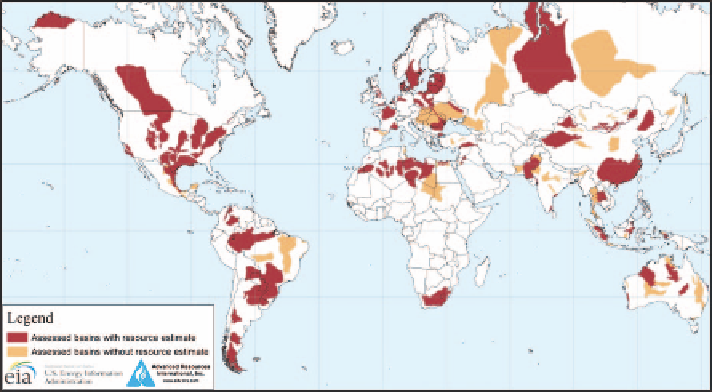Environmental Engineering Reference
In-Depth Information
Figure 18 Map showing potential for world-wide development of shale gas.
(Source: United States basins from U.S. Energy Information Adminis-
tration and United States Geological Survey; other basins from Advanced
Resources International, Inc., based on data from various published
studies).
52
shale oil resources of 345 billion bbls.
52
In the UK, an initial overview of
potential shale gas resources gave an estimate of 5.2 TCF;
67
subsequent
evaluation of the Carboniferous Bowland Shale in the north of England gave
a much larger resource range of 164-447 TCF.
68
Elsewhere, shale exploration
and production is taking place in countries such as Poland, Canada, China,
Argentina and Australia with variable success, but in others environmental
concerns have resulted in drilling bans and moratoria on shale exploration
in South Africa (Karoo Basin), France, Germany and Bulgaria to name a few,
with strong opposition in other countries such as the UK and Romania.
Coupled with these over-riding environmental concerns, other than Canada
and potentially Argentina, most countries do not have a thriving, low-cost
drilling industry or available infrastructure which greatly increases the cost
of the intensive drilling and production facilities required for shale resource
development. However, the high energy-price environment present in many
of these countries, unlike the USA, can offset the higher drilling and pro-
duction costs, if the environmental concerns can be overcome, allowing
potential reserves in many areas to be exploited.
7 Conclusions
The almost overlooked development of shales as gas reservoirs in the 1980-
1990s exploded into the phenomenon of shale gas, firstly in the USA and,
later, expanding to the rest of world.
Shale resources comprising both gas and oil reside in rocks which in
conventional petroleum systems form source rocks and cap rocks/seals and

